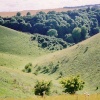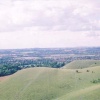Please login or click here to join.
Forgot Password? Click Here to reset pasword
 |  |  |  |  |  |
| Edward Lever Posts: 734 Joined: 22nd Dec 2005 Location: UK | quotePosted at 21:45 on 12th September 2018 Hi Darrell, it is good to see someone else contributing to the photography debates. PoE has had its ups and downs in recent years but I hope it can continue to be somewhere for sharing images and also debate for those interested in the technical matters too, without it becoming too geeky or pretentious. |
| Rod Burkey Posts: 554 Joined: 2nd Sep 2008 Location: UK | quotePosted at 09:50 on 13th September 2018 I think that higher ISO capabilities have enabled us all to take better images in low light. Rather than affect my choice in prime versus zoom lenses, it has certainly affected how often I use flash. If you can afford a battery of prime lenses, then go for it. Zooms can make you lazy, insofar as images can be composed from one place, rather than moving with a prime. Sigma Art lenses have been a revelation to me in the quality possible through their zooms. I still love my primes, but am using them less. |
| Edward Lever Posts: 734 Joined: 22nd Dec 2005 Location: UK | quotePosted at 12:43 on 13th September 2018 Hi Rod, how nice to see a post from my Scouse Buddy, hope you are in good shape up in the north-west.. I am generally in agreement with your analysis, Rod. I also have a few primes acquired over the years, but only use them now and then, when really struggling for light and/or want a very shallow depth of field. The quality of zooms these days is so good that for general walk-about use, they are the sensible choice. I have never liked going out with a bag full of lenses, and don't like changing lenses out of doors because of the risk of getting dirt on the sensor. If there is a shot which I know will benefit from using a prime, then I will go out with it already fitted on the camera. |
| Darrell Evans Posts: 11 Joined: 11th Sep 2018 Location: UK | quotePosted at 17:03 on 13th September 2018 I have to agree with you both. When it come to zooms they are so good now that it has put my primes into retirement. To be honest it is for the reason Rod mentioned, it has made me lazy. Also in part I try not to change the lens too often when I am out. Dust on the sensor is a pet hate of mine. If I know I am going to somewhere like a nature reserve my large lens is on before I go. The issue of weight is now becoming an issue too. If I take just 3 lenses a tripod and a few bits then by the end of the day I know I have carried them. So a prime collection would not be considered if it was a walk in the country. When it comes to high ISO I am still stuck in the film days and rather use a tripod when possible and a low ISO. When I got my camera the base ISO of 64 was a plus for me. I know the camera is good at high ISO and this is my mindset but people coming into the hobby and most people that shot film now think nothing of shooting 1600 and above. |
| Edward Lever Posts: 734 Joined: 22nd Dec 2005 Location: UK | quotePosted at 19:25 on 13th September 2018 I learned photography using film and generally used films with ISO ratings between 50 and 100.There were specialist high speed films such as TRI-X and HP4 intended for sports and press photography which were rated at 400 ISO and could be 'pushed' a little, but the results were extremely grainy. But at the time, there was no alternative. When digital cameras first came on the scene, the results were inferior to film. Nowadays, modern digital cameras are capable of good results at astonishingly high ISO settings. It seems perverse not to capitalise on the improvements, particularly if it removes the need to lug a tripod around. The high ISO capability, coupled with an image stabilised lens, gives a level of performance which was unimaginable when film was the only option. |
| Please login to post to this thread... |